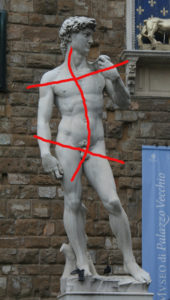
Painting Name: Black Children Keep Your Spirits Free (1972)
Artist name : Carolyn Lawrence
On initial sight of the painting Black Children Keep Your Spirits Free,1972 by the artist Carolyn Lawrence, it jumps at you with a bold range of colors. The acrylic paints provide vibrant edges and help separate the painting into sections without breaking off of the bigger image. It looks to be a compilation of six human figures doing different actions. Attention can be drawn to the most frontal positioned girl using a drum-like instrument. The various bright colors along the clothing bring the eyes toward the face. One can describe the colors to move from left to right. Many of the brighter colors can be seen more towards the right side of the painting compared to the left side. This could be on purpose judging by the palette of colors from one side to the other. The text spread out through the background say “Keep Your Spirits Free” move around the figures like a stream of water filling up the empty space. Along the top-side of the painting, there are stripes filling in the “sky” and what can be described as North America and Africa. This plays into the composition that could imply the influence from both countries. Each figure is performing a different action and seem to reflect off of “black” culture. The varying colors of the text is like a riot of something. If it were in a more plain text, the words would’ve probably lost it’s eye candy from repetitiveness. The artist most likely only painted the words “Black Children” once in the center because it draws the least amount of attention yet the most when observing the different elements piece together when stepping back for a bigger picture. The painting spans 48 1/2″ x 50 1/2″ x 5 1/4″ and is displayed with the Soul of a Nation: Art in the Age of Black Power exhibition at the Brooklyn Museum. The scale of the painting helps bring out the colors as well as the text for a greater comprehension. The smaller details are easier to spot and the artist did a good job filling in the what would have been empty space with color and subtle meaning like the colored silhouettes of two countries.
Overall, this painting brings various elements together with color mainly. As observed, the palette of colors move slowly over the painting as the figures stand out yet blend into the words of “Keep Your Spirits Free” In the description of the exhibit, the artists step out to tackle on unjust social conditions by making art. This painting particularly show some insight that black people have culture and are just as human as everyone else in the world.






